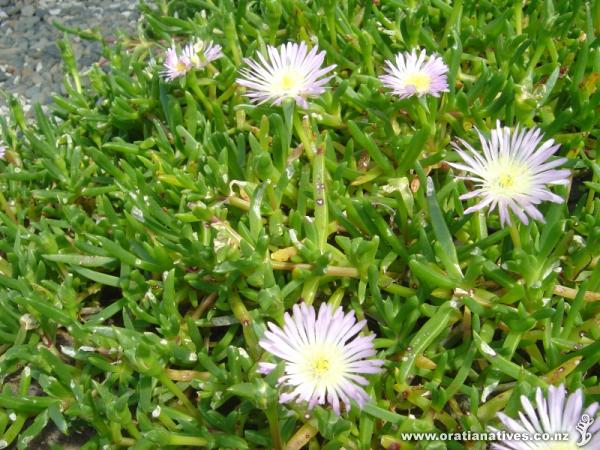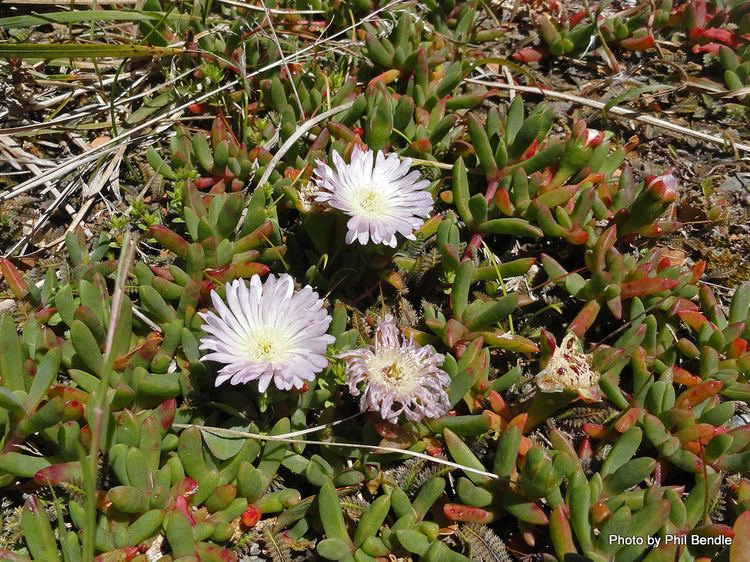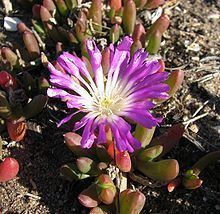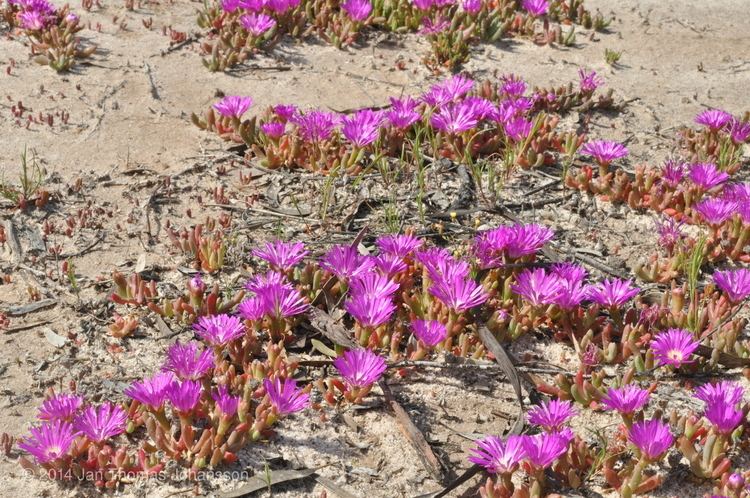Kingdom Plantae Family Aizoaceae Scientific name Disphyma crassifolium Rank Species | Order Caryophyllales Genus Disphyma
N.E.Br. Higher classification Disphyma | |
 | ||
Similar Disphyma crassifoli, Conicosia, Erepsia, Chasmatophyllum, Cerochlamys | ||
Disphyma is a monotypic genus of succulent shrubs. Commonly known as round-leaved pigface, New Zealand iceplant and purple dewplant, it occurs in South Africa, Australia and New Zealand. Its sole species, Disphyma crassifolium, is divided into two subspecies, D. crassifolium subsp. crassifolium and D. crassifolium subsp. clavellatum.
Contents

Description

It grows as a prostrate, succulent shrub or annual herb, from two to 30 centimetres high. Unlike the other pigfaces, its leaves are round in cross-section. Flowers are pink, purple or violet.
Taxonomy

Disphyma crassifolium was first published as Mesembryanthemum crassifolium by Carl Linnaeus in 1753, based on South African specimen material. In 1786, Georg Forster published M. australe based on New Zealand material. Forster failed to give a description, however, so valid publication of the name falls to William Aiton, who published a description in 1789. In 1803, Adrian Hardy Haworth published M. clavellatum based on plants raised at Kew from seeds collected in Australia. Thus distinct species were erected for each country in which the plant occurred.

The genus Disphyma was published by N. E. Brown in 1925. The type species for the genus was M. crassifolium, which would be transferred into Disphyma as D. crassifolium. Apparently Brown neglected to formally transfer the species over, however, as this was done in 1927 by Harriet Margaret Louisa Bolus. Three years later, Brown transferred M. australe into Disphyma as D. australe. Robert Chinnock published a new species name, D. blackii in 1971, and five years later he transferred M. clavellatum to Disphyma.

In the early 1980s, Hugh Francis Glen determined, on the basic of a multivariate analysis, that Disphyma was monotypic. All other names were therefore given synonymy with D. crassifolium. This situation remained until 1986, when it was decided that the South African populations differed sufficiently from the Australian and New Zealand populations to merit distinct subspecies. D. crassifolium subsp. clavellatum was then erected to encompass the Australian and New Zealand populations, with the autonym D. crassifolium subsp. crassifolium defined as encompassing the South African plants.
Distribution and habitat

Disphyma is widely distributed in South Africa, Australia and New Zealand. It grows in saline areas such as coastal dunes and samphire flats, and tolerates a range of soils including sand, loam and clay.
